ISSN ONLINE(2319-8753)PRINT(2347-6710)
ISSN ONLINE(2319-8753)PRINT(2347-6710)
| A.S.S.Murugan , D.Muthurakesh Department of Electrical and Electronics Engineering, K.L.N College of Engineering, Madurai, India. |
| Related article at Pubmed, Scholar Google |
Visit for more related articles at International Journal of Innovative Research in Science, Engineering and Technology
Now a days Harmonic Distortion in electric power system is a major power quality problem that has been attracting significant attention of engineering community. In order to evaluate the Total Harmonic Distortion(THD) and the harmonic current component is a critical issue. In this paper proposes a new method to measure the harmonic impedance at the metering point. Feed Forward Back Propagation Neural Network(FF-BPNN) is employed to measure the harmonic impedance in a power system. The measured Harmonic impedance is used to identify the harmonic source. The proposed technique is proves that the trained Neural Network(NN) are able to produce exact identification of harmonic sources.
Keywords |
| Total Harmonic Distortion(THD), Neural Network(NN),Back Propagation Neural Network(BPNN). |
INTRODUCTION |
| The objective of the electric utility is to deliver a sinusoidal voltage at constant magnitude and frequency throughout its network. However the power electronic loads, significant amounts of harmonic currents are being injected into the network by these loads. Harmonics are a major cause of power supply pollution, lowering the power factor, and increasing electrical losses. Harmonic current cause harmonic voltage drops in the supply network and therefore distorted the voltage at the point of common coupling (PCC). Any load, even linear loads, connected to the PCC, will have harmonic currents injected into them by the distorted PCC voltage. This is not a new issue and researchers have proposed tools based on traditional power system analysis methods to solve this problem. Some of the harmonic impedance measurement techniques are Fast Fourier transform (FFT), Fuzzy logic, Neural Network, etc. The FFT techniques are still widely used tool for analyze and measure the both stationary and transient signals harmonics in power systems. But accuracy is very less for the above techniques. Fuzzy logic is applied as integrating system to identify the various sources of those disturbances particularly of harmonics. Fuzzy gives accuracy output, but it‟s require more fine tuning and simulation before operational. A Neural Network (NN) is a network of simulated neurons that can be used to recognize instances of patterns. NN learn by searching through a space of network method was able to evaluate the harmonics content of the currents efficiently, fast and simple. |
POWER QUALITY |
| Power Quality concepts are simply the interaction between electrical power with electrical instruments. If the electrical equipments operates correctly and reliably without being damaged then we can say that the electrical power is of best quality. Or otherwise, if the electrical equipments malfunction is damaged during normal usage, we can say that the quality of power is poor. It‟s defined as the “concept of power, ground and electronic instrument in a manner that is suitable to the operation of that equipment” The AC power harmonic problems are mainly due to the substantial increase of non-linear loads due to technological advances, such as the use of power electronics circuits and devices. In AC/DC transmission links, or in the loads of power system using power electronics or microprocessor controller. Such equipment generates harmonics throughout the system. Harmonics could be present in the generated voltage itself. Even if the generated voltage is a pure sine wave, certain types of loads can cause harmonics and distort the waveform. There are more numerous types of power quality issues and power problems in electrical power systems. Some of the power quality problems are harmonic, surge, sag, swell, notching, noise etc. |
H ARMONICS |
| Harmonics is defined as sinusoidal component of a periodic wave or quantity having a frequency that is an integer multiple of the fundamental frequency. Harmonic Analysis is the process of identifying the magnitude and phases of the fundamental and higher order harmonics in power system. A linear load in a power system is a component in which the current is proportional to the voltage. In general, this means that the current wave shape will be the same as the voltage. Typical examples of linear loads include motors, heaters, and incandescent lamps. A Non-linear load in a power system is a component that current is not proportional to the voltage. In general, this means that the current wave shape will be the different as the voltage. Typical examples of Non-linear loads include rectifiers, UPS, adjustable speed motor drives, DC motor drives and arcing equipment. Harmonic sources are, Photovoltaic systems, Electronic ballast, Uninterruptable power supplies, Computers, Switching power supplies, Converters, Control circuits, Frequency converters, Static VAR compensators, Arc furnaces, HVDC transmission systems etc. Effects of harmonic are reduce the efficiency of the system power generation, failure of electronic equipment, overheating and failure of electric motors, excessive measurement errors in metering equipment. |
HARMON IC INDICES |
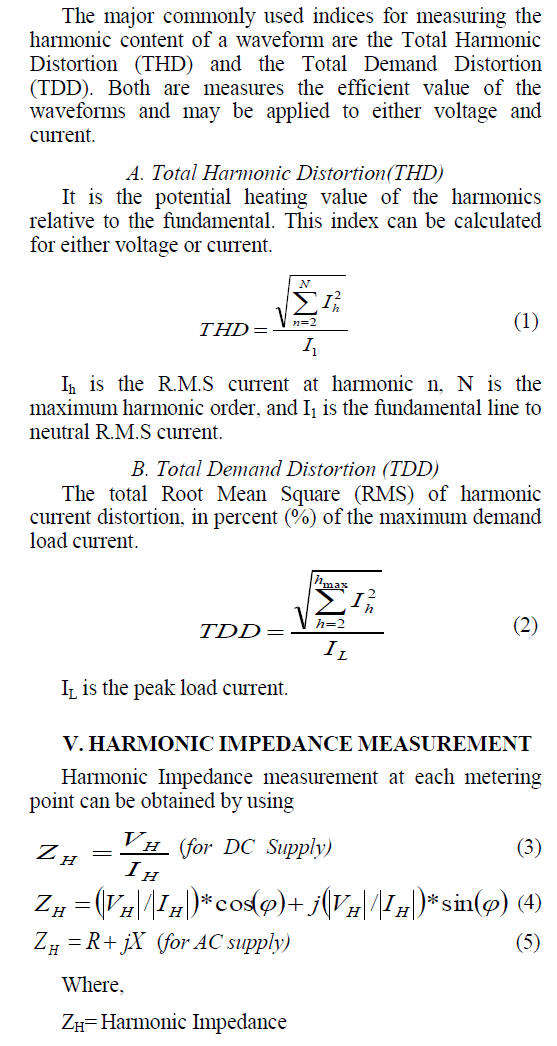 |
| VH= Harmonic Voltage |
| IH= Harmonic Current |
| R= Resistance |
| X= Reactance |
| The system impedance is generally much smaller than the load side impedance. So the magnitude of the ZH can be used to check, If the impedance is the system side impedance (or) load side impedance. It also helps to determine the location of the inter harmonic sources. |
NEURAL NETWORK |
| A. Introduction to Neural Network |
| 1) Biological Neural Network: |
| The Human brain consists of a huge number of neurons approximately1011 with numberous interconnections. The biological neuron networks are considered with three main parts. Cell body, Dendrites, and Axon. Dendrites are tree-like networks made of nerve fiber connected to the cell body. An axon connections are extended from the cell body and carrying signal from the neuron. It is found that each strand terminates into a small bulb-like organ called synapse. It is through synapse that the neuron introduces its signals to other nearby neurons. The receiving ends of these synapses on the nearby neurons can be found both on the dendrites and on the cell body. There are approximately 104 synapses per neuron in the human brain. The cycle time of execution in the biological neuron is of a few milliseconds. It‟s store the information in its interconnection or in synapse strength. |
| 2) Artificial Neural Network: |
| Artificial Neural Network possess more number of interconnected processing elements called nodes or units or neurons, which usually operate in parallel and are configured in regular architectures. Each neuron is connected with the other by a connection link. Each connection link is associated with weights which contain information about the input signals. This information is used by the neuron net to solve a particular problem. ANN‟s collective behavior is characterized by their ability to learn, recall and generalize training patterns or data similar to that of a human brain. They have the capability to model networks of original neurons as found in the brain. Thus the ANN processing elements are called neurons or artificial neurons. |
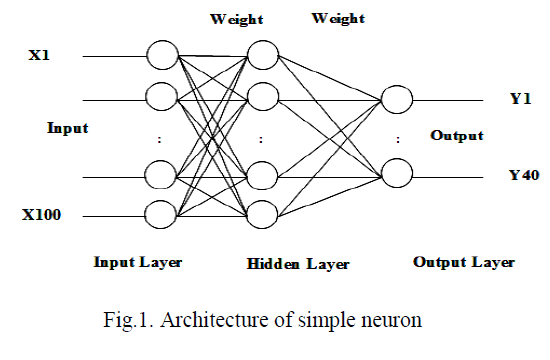 |
| Where |
| X=input, W=weight, Y=output. |
| Neural Network has structure including number of hidden layers, number of hidden nodes and number of output nodes. The hidden layer provides network with its ability to generate, in sufficient number of hidden neuron is capable of approximated at any continuous function. There is no one formulas are using for selecting the optimum number of hidden neuron. However some values are available for identifying number of hidden neurons. A rough approximation can be identified for a three layer network with „n‟ input and „m‟ output neurons, the hidden layer would have square root of (n*m)neurons.. |
| 3) Learning Process: |
| Learning methods in NN can be classified into three basic types are supervised, Unsupervised, and Reinforced. In this, each and every input pattern that is used to train the network is associated with an output pattern, it is the target or the desired pattern. A teacher is consider to be present during the learning process, when a difference is made between the network‟s calculated output and the correct expected output, to determine the error. Then the error can be used to change network parameters, which results in an improving the output performance. In this learning rule, the target outputs are not presented to the network. It is if there is no teacher, then the system learned by its own discovering and adapting to structural features in the input pattern. In this method, a teacher though available, we does not present the expected answer but only indicates whether output is correct or not. A reward is only given for a correct answer computed and a penalty for a wrong answers. But, reinforced learning is not one of the developed forms of learning. |
BACKPROPAGATION NEURAL NETWORK |
| Back propagation is a systematic method for training multi-layer artificial neural networks. It has a mathematical foundation that is strong if not highly practical. it is a multi-layer forward network using extend gradient-descent based delta-learning rule, commonly known as back propagation rule. Back propagation provides a computationally efficient method for changing the weights in a feed forward network, with differentiable activation function unit. The aim of this network is to train the net to achieve a balance between the ability to respond correctly to the input patterns that are used for training and the ability to provide good responses to the input that are similar. The algorithm of back propagation involves four stages, are Initialization of weights, Feed Forward, Back Propagation of errors, updation of the weights and biases. |
RESULTS AND DISCUSSION |
| A. Simulation Circuit: |
| Using MATLAB tools to run the following Simulink diagram. In this circuit three phase AC supply are given to the load and universal bridge are connected series with the circuit. This universal bridge are act as a Non-linear loads and it‟s generated the harmonic for the system. In using voltage and current distorted waveform to measure the |
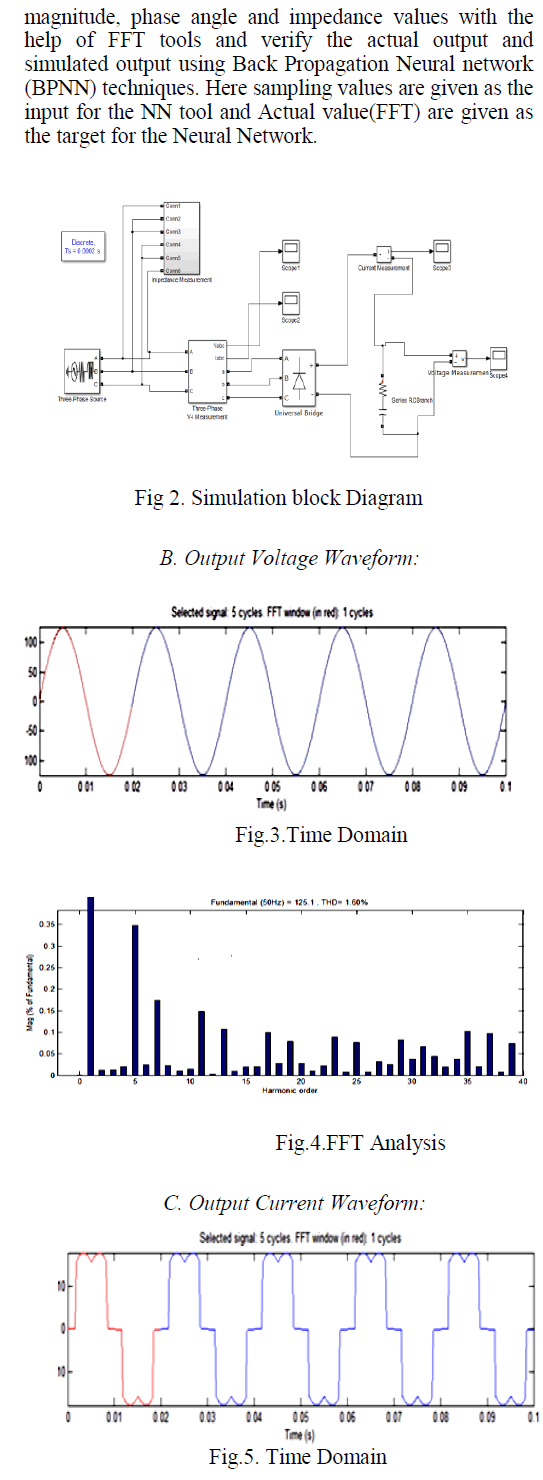 |
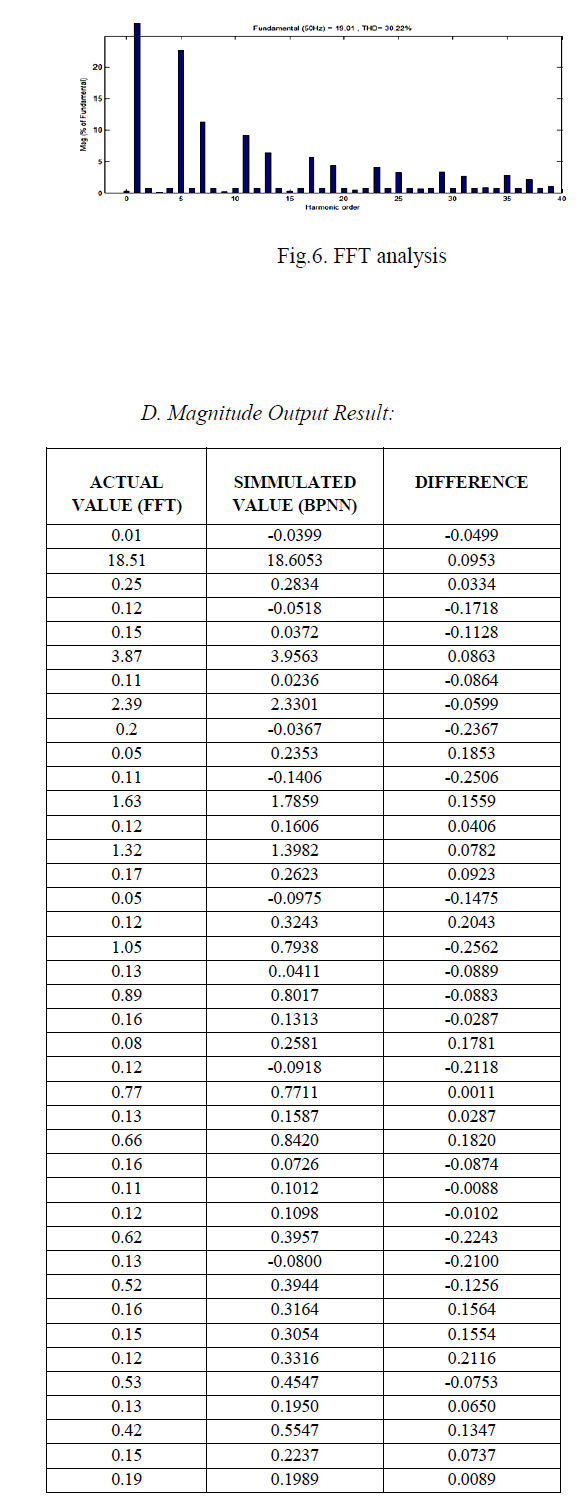 |
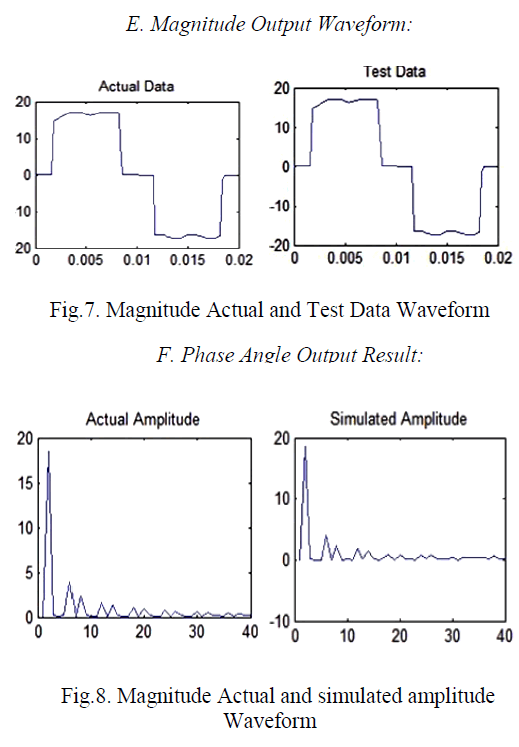 |
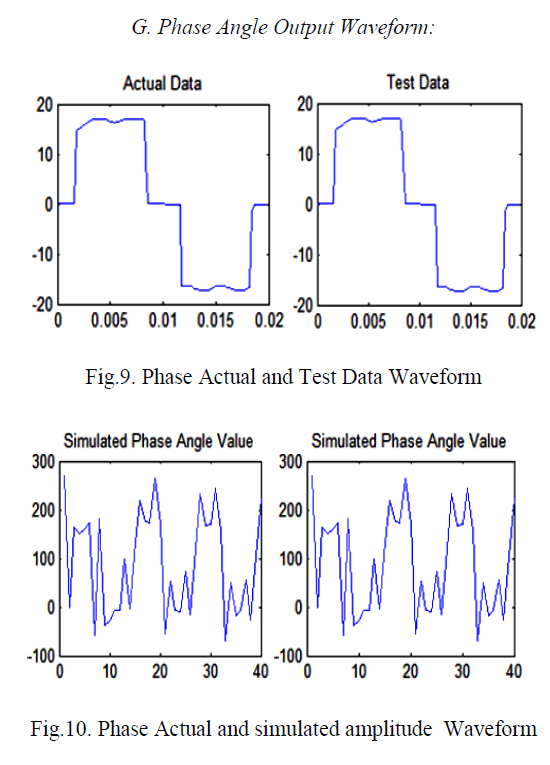 |
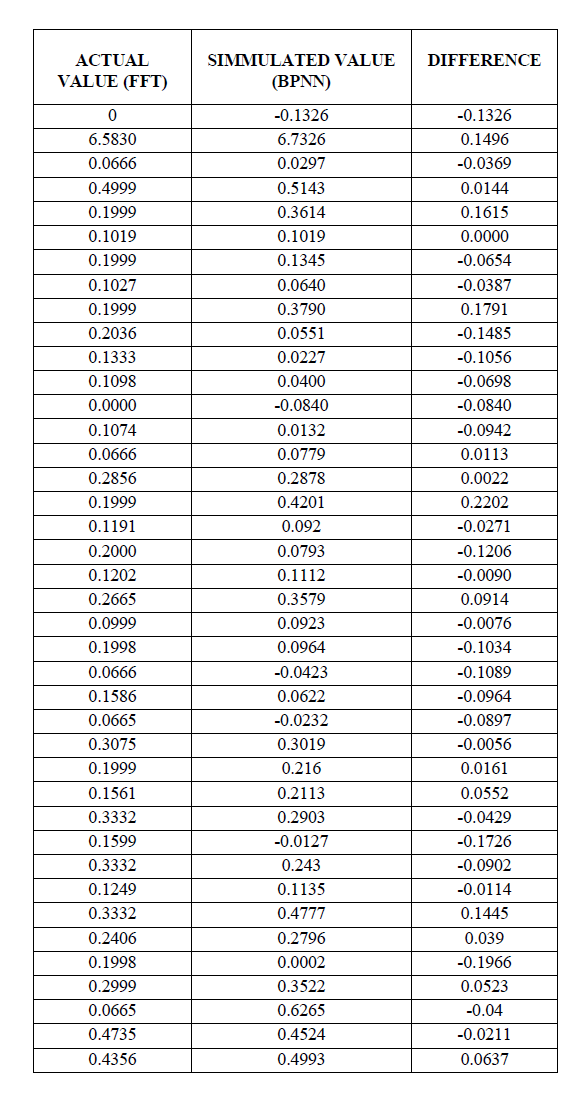 |
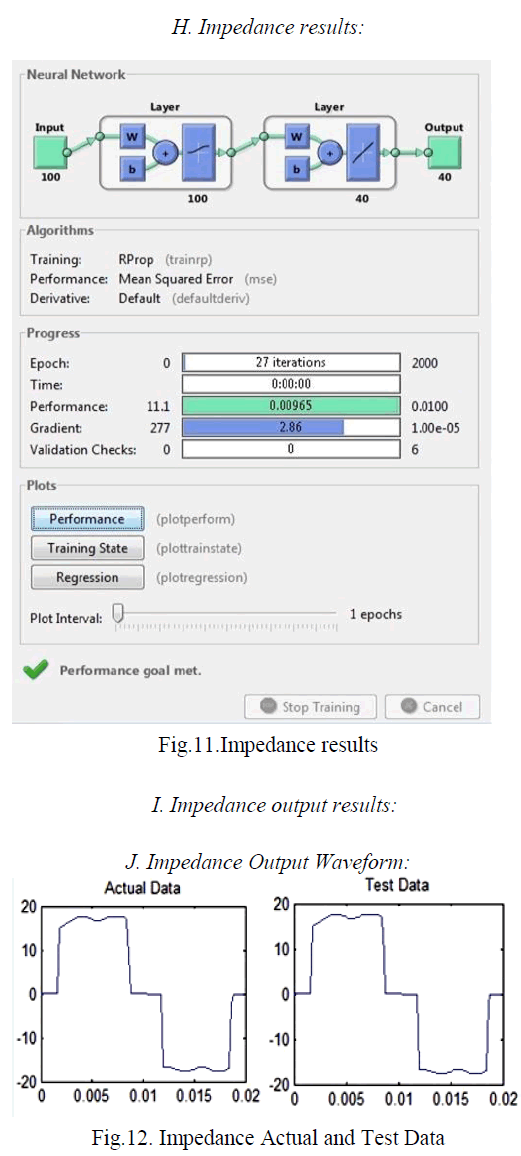 |
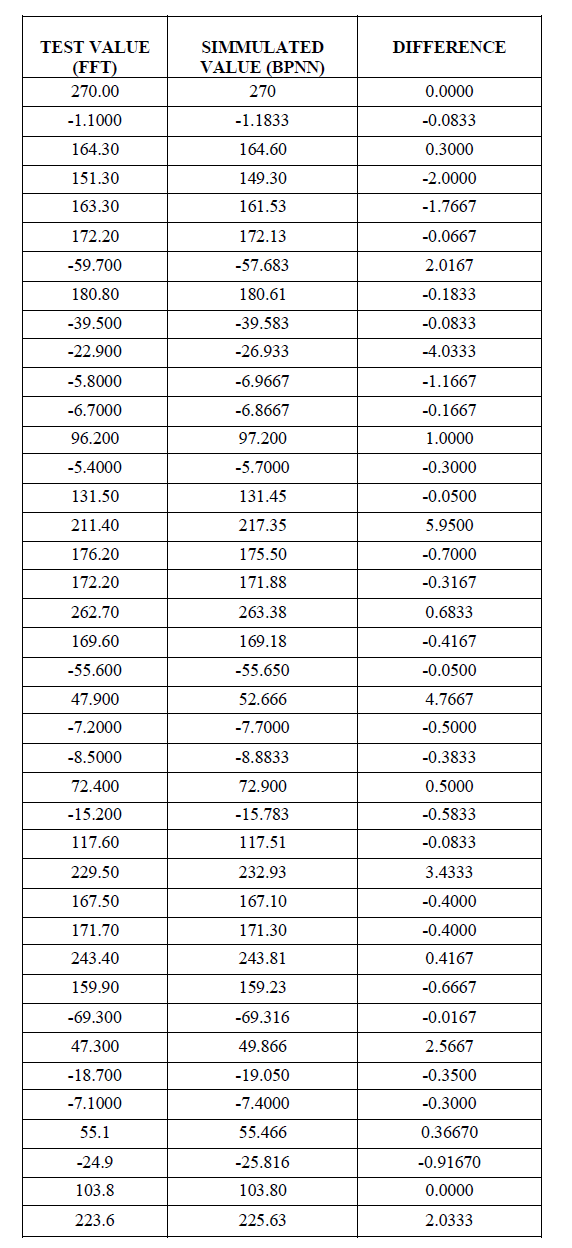 |
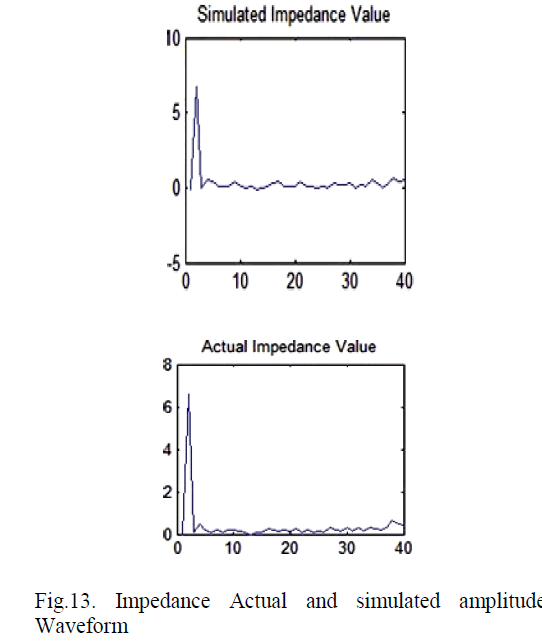 |
CONCLUSION |
| The main objective of the work is to measure the harmonic impedance in three phase system. Back propagation neural network is used to measure the harmonic impedance. The input current is sampled and given as input to the neural network. The magnitude and phase angle are given as target and for any load variations the trained Neural Network predict the harmonic impedance values. The obtained simulated impedance value is compared with the actual value. The proposed technique proves that the obtained impedance values effectively measure the harmonic distortion in the three phase system. |
ACKNOWLEDGEMENT |
| The authors are grateful to the principal and management of K.L.N college of Engineering, Madurai for providing all facilities for the research work. |
References |
|